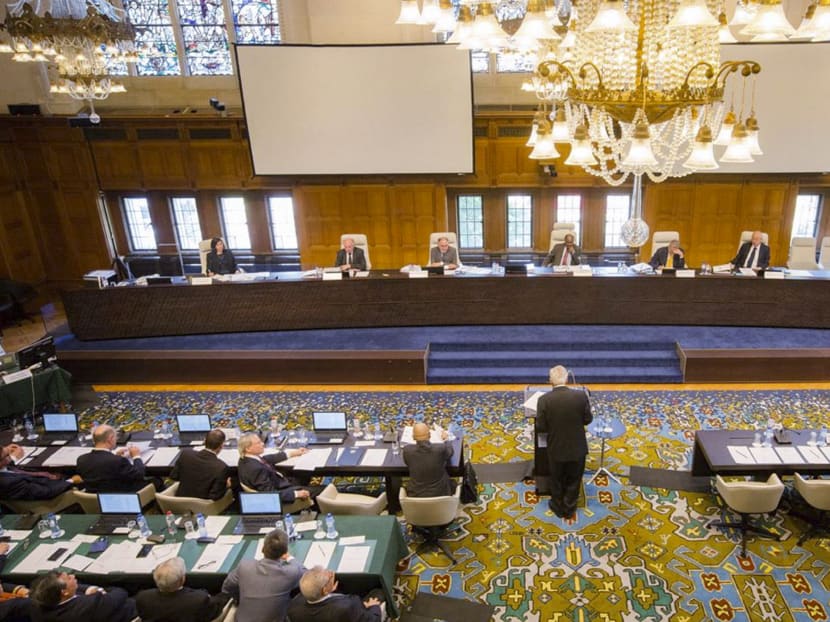South China Sea ruling: What you need to know from 479-page judgment
The Permanent Court of Arbitration in The Hague has issued a landmark 479-page ruling on the dispute between China and the Philippines in the South China Sea. Here’s a summary of the key rulings by the court.
The Permanent Court of Arbitration in The Hague has issued a landmark 479-page ruling on the dispute between China and the Philippines in the South China Sea. Here’s a summary of the key rulings by the court.
Historic rights and the "nine-dash line"
The Tribunal found that it has jurisdiction to consider the Parties’ dispute concerning historic rights and the source of maritime entitlements in the South China Sea. The Tribunal also examined the historical record to determine whether China actually had historic rights to resources in the South China Sea prior to the entry into force of the United Nations Convention on the Law of the Sea (Convention). The Tribunal noted that there is evidence that Chinese navigators and fishermen, as well as those of other States, had historically made use of the islands in the South China Sea, although the Tribunal emphasized that it was not empowered to decide the question of sovereignty over the islands. However, the Tribunal considered that prior to the Convention, the waters of the South China Sea beyond the territorial sea were legally part of the high seas, in which vessels from any State could freely navigate and fish. Accordingly, the Tribunal concluded that historical navigation and fishing by China in the waters of the South China Sea represented the exercise of high seas freedoms, rather than a historic right, and that there was no evidence that China had historically exercised exclusive control over the waters of the South China Sea or prevented other States from exploiting their resources. Accordingly, the Tribunal concluded that, as between the Philippines and China, there was no legal basis for China to claim historic rights to resources, in excess of the rights provided for by the Convention, within the sea areas falling within the ‘nine-dash line’.
Status of features in the Spratly Islands
None of the Spratly Islands is capable of generating extended maritime zones. The Tribunal also held that the Spratly Islands cannot generate maritime zones collectively as a unit. Having found that none of the features claimed by China was capable of generating an exclusive economic zone, the Tribunal found that it could—without delimiting a boundary—declare that certain sea areas are within the exclusive economic zone of the Philippines, because those areas are not overlapped by any possible entitlement of China.
Lawfulness of Chinese actions
Having found that certain areas are within the exclusive economic zone of the Philippines, the Tribunal found that China had violated the Philippines’ sovereign rights in its exclusive economic zone by (a) interfering with Philippine fishing and petroleum exploration, (b) constructing artificial islands and (c) failing to prevent Chinese fishermen from fishing in the zone. The Tribunal also held that fishermen from the Philippines (like those from China) had traditional fishing rights at Scarborough Shoal and that China had interfered with these rights in restricting access. The Tribunal further held that Chinese law enforcement vessels had unlawfully created a serious risk of collision when they physically obstructed Philippine vessels.
Harm to marine environment
The Tribunal considered the effect on the marine environment of China’s recent large-scale land reclamation and construction of artificial islands at seven features in the Spratly Islands and found that China had caused severe harm to the coral reef environment and violated its obligation to preserve and protect fragile ecosystems and the habitat of depleted, threatened, or endangered species. The Tribunal also found that Chinese authorities were aware that Chinese fishermen have harvested endangered sea turtles, coral, and giant clams on a substantial scale in the South China Sea (using methods that inflict severe damage on the coral reef environment) and had not fulfilled their obligations to stop such activities.
Aggravation of dispute
Finally, the Tribunal considered whether China’s actions since the commencement of the arbitration had aggravated the dispute between the Parties. The Tribunal found that it lacked jurisdiction to consider the implications of a stand-off between Philippine marines and Chinese naval and law enforcement vessels at Second Thomas Shoal, holding that this dispute involved military activities and was therefore excluded from compulsory settlement. The Tribunal found, however, that China’s recent large-scale land reclamation and construction of artificial islands was incompatible with the obligations on a State during dispute resolution proceedings, insofar as China has inflicted irreparable harm to the marine environment, built a large artificial island in the Philippines’ exclusive economic zone, and destroyed evidence of the natural condition of features in the South China Sea that formed part of the Parties’ dispute.
Here is an 11-page press release for your perusal.







